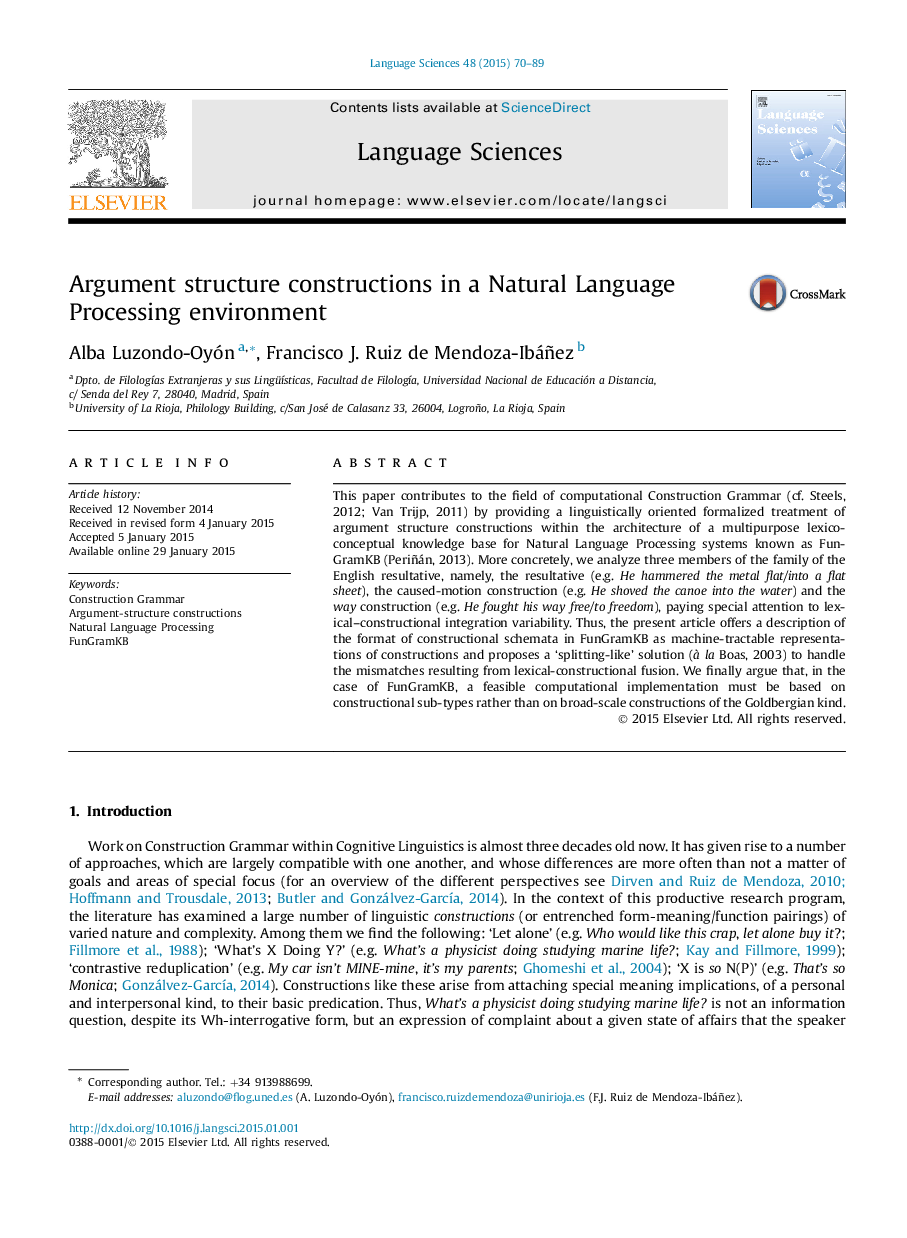| Article ID | Journal | Published Year | Pages | File Type |
|---|---|---|---|---|
| 1103067 | Language Sciences | 2015 | 20 Pages |
•We show how constructions can be handled in a computational environment.•We analyze three members of the family of the English resultative.•We offer a description of the format of constructional schemata.•Lexical–constructional fusion mismatches require a ‘splitting-like’ solution.
This paper contributes to the field of computational Construction Grammar (cf. Steels, 2012; Van Trijp, 2011) by providing a linguistically oriented formalized treatment of argument structure constructions within the architecture of a multipurpose lexico-conceptual knowledge base for Natural Language Processing systems known as FunGramKB (Periñán, 2013). More concretely, we analyze three members of the family of the English resultative, namely, the resultative (e.g. He hammered the metal flat/into a flat sheet), the caused-motion construction (e.g. He shoved the canoe into the water) and the way construction (e.g. He fought his way free/to freedom), paying special attention to lexical–constructional integration variability. Thus, the present article offers a description of the format of constructional schemata in FunGramKB as machine-tractable representations of constructions and proposes a ‘splitting-like’ solution (à la Boas, 2003) to handle the mismatches resulting from lexical-constructional fusion. We finally argue that, in the case of FunGramKB, a feasible computational implementation must be based on constructional sub-types rather than on broad-scale constructions of the Goldbergian kind.
